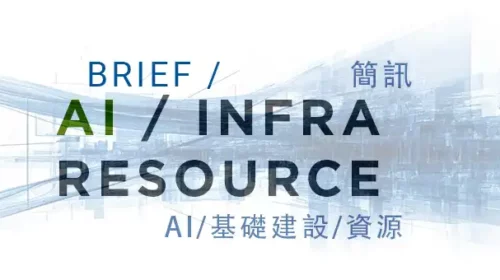Huafang Hopes ‘Internet Bad Boy’ Backing Will Bring Investors Streaming to Its IPO

The second-tier livestreaming platform has applied to list in Hong Kong for a second time, as its business bounces back from a difficult merger
Key Takeaways:
- Huafang Group posted 4.6 billion yuan in revenue last year, up 63% higher from pre-pandemic levels in 2019, but still much lower than its major competitors
- Company’s largest shareholder is Zhou Hongyi, whose notoriety as China’s “internet bad boy” could raise awareness among investors
By Ken Lo
Despite a boom in livestream entertainment during the pandemic and backing from a man famous as China’s “internet badboy,” Huafang Group Inc. has yet to make it to center stage among the nation’s vibrant field of livestreaming platforms.
Still, the company managed to post record revenue last year, and also returned to profitability. Now the second-tier player is seeking stardom in the capital market by applying for a Hong Kong IPO to fund an accelerated expansion. This isn’t Huafang’s first ride on the Hong Kong IPO merry-go-round. It first filed for a listing last Oct. 25, though that application expired late last month. Now it has filed again with its latest application on April 29.
The company is a livestreaming veteran, and has established itself as a solid second-rung player in terms of revenue, users and profitability. So, now it seems to want more money to step up its game. But it could face many challenges in that process, given its own limited size and tightening regulation of the broader market.
Major livestreaming platforms like Hello Group (MOMO.US), YY Inc. (YY.US) and Kuaishou Technology (1024.HK) have long left Huafang in the dust in terms of revenue. Even Inke Ltd. (3700.HK), a platform also highly reliant on livestreaming, has overtaken Huafang in terms of revenue. Last year Inke successfully transitioned from a single to a matrix of products, fueling an 85.4% jump in its revenue to 9.18 billion yuan ($1.4 billion) as it posted a 415 million yuan profit.
Fluctuating profits
Huafang has also posted steady growth in recent years, with revenue rising from 2.83 billion yuan in 2019 to 4.6 billion yuan last year, according to the company’s prospectus. But like its tempestuous backer and “internet bad boy” Zhou Hongyi – known for his provocative remarks and actions, Huafang’s profits have been more volatile. The company registered profits of 190 million yuan and 330 million yuan in 2019 and 2021, respectively. But both of those were dwarfed by a whopping 1.52 billion yuan loss in 2020.
The company’s operations are composed of two parts. The most prominent is its mobile video livestreaming app Huajiao and desktop livestreaming platform 6.cn. The other part is HOLLA, an overseas social media platform it acquired in December 2020, which it hopes can help it diversify outside China.
Video livestreaming is its dominant revenue source, accounting for 97.3% of the total last year. Within the video pie, Huajiao app and 6.cn platform raked in revenue of 3.47 billion yuan and 1.01 billion yuan, respectively, registering 22.8% and 19.5% growth from 2020. Huajiao accounts for about three-quarters of the company’s revenue, while 21.9% comes from the stodgier desktop-bound 6.cn.
Huafang’s latest annual revenue of 4.6 billion yuan puts it squarely behind Kuaishou, YY and Hello Group, which posted figures of 31 billion yuan, 16.4 billion yuan and 8.28 billion yuan last year, respectively.
What does set the company apart from those rivals is Huafang’s backing by Zhou Hongyi, the controversial but also tech-savvy character behind such internet successes as Qihoo 360 (601360.SH), 360 DigiTech (QFIN.US) and Ludashi (3601.HK). Zhou’s brash outspokenness has put him in the spotlight for controversial remarks against other big tech names like Lei Jun, the likable chairman of smartphone giant Xiaomi (1810.HK), and Pony Ma, the genius behind gaming and social media giant Tencent (0700.HK).
Huafang’s prospectus shows that Zhou holds 38.21% of the company’s shares, making him the company’s single largest investor. The second largest is cultural investor Songcheng Performance with a similar 37.06% stake.
The near equal status of the top two stakeholders is the result of a 2019 merger between Huajiao, which was controlled by Zhou, and 6.cn, owned by Songcheng. The marriage was intended to forge new synergies between the pair. But things didn’t work out quite as planned. Instead, a merger related hit to its business was the main factor behind the company’s massive 2020 loss.
Impairment loss
The prospectus shows that Huafang paid dearly in 2020 operating costs due to a decision to give 6.cn livestreaming anchors a bigger cut of revenue they bought in to retain them and attract more mobile users to the platform. As a result, its gross margin fell from 42.2% in 2019 to 38.3% in 2020. It was also forced to take a 1.8 billion yuan impairment loss against 2.46 billion yuan worth of goodwill generated from the merger.
Without that big one-time item, the company returned to profitability last year, suggesting the worst from the rocky road after the merger is in the past.
The company’s biggest selling point is undoubtedly the tremendous potential of China’s livestreaming market. That market is expected to more than double from 246.2 billion yuan last year to 645 billion yuan in 2027, representing compound annual growth of 17.4%, according to third-party research in the prospectus.
Booming popularity of virtual present-giving and funds from advertising and e-commerce transactions are the market’s most important revenue sources. Gifting generated 172.9 billion yuan in revenue last year alone, accounting for 70% of the revenue pie.
But investors should also note that Huafang’s audience is shrinking. Monthly active users (MAU) for Huajiao dropped from 41 million in 2018 to 29.9 million last year, accounting for 14% of its 215 million registered users. Huajiao has 935,000 total paying users, a far cry from the 11.4 million for Hello Group’s Momo platform, and even lower than the 1.51 million users for YY Inc.
While details of its fundraising plans have yet to be disclosed, we can use price-to-earnings (P/E) ratios for Hello Group, Inke and YY Inc. as a reference to estimate its IPO valuation. The three companies have P/E ratios of 3.8 times, 5.2 times and 26.8 times, respectively, yielding an average of 11.9 times. Using that figure, the company might expect a valuation of about HK$4.7 billion ($711 million). But given its smaller size than the other three, Huafang may have to offer some discounts to attract investors.
To subscribe to Bamboo Works weekly free newsletter, click here






